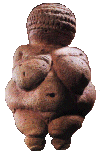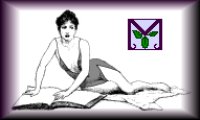Astarte (star) Origin of name: western Semitic, predominantly Phoenician
[Lebanon & Syria]. Fertility goddess. Period of worship: ca. 1500 BC or earlier
until ca. 200 BC. Synonyms: Astarat, Attart (Ugarit). Center(s) of Cult:
predominantly Tyre, also Sidon, Byblos, Ascalon, Carthage, Kition [Cyprus], Eryx
[Sicily], and Malta. Art References: sculptures, plaques, votive stelae,
glyptics, etc. Literary sources: mainly inscriptions.
The goddess of the evening star, of war and of sexual love. Inscriptions from
the 5th century BC in her major temple at Sidon suggest she was perceived as an
emanation of Baal Samin, personifying his divine power. She is also his consort.
Her animal is the sphinx, which typically appears on either side of her throne.
She is often represented by baetyls or stone stelae. In Helenic times
she became largely syncretized with the Greek goddess Aphrodite. A first century BC
inscription in a sanctuary dedicated to Aphrodite at Delos identified the "holy
Syrian goddess." Astarte is typically depicted naked, and, in Egyptian style,
wears a crown of cows' horns enclosing a sun disc. The latter may have rays
emanating. See also Astoreth, Istar, and Aserah. Source: Encyclopedia of Gods 13 Dec 97
|
|







